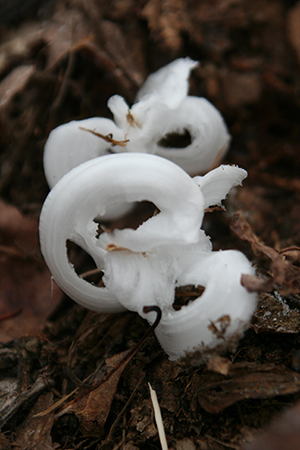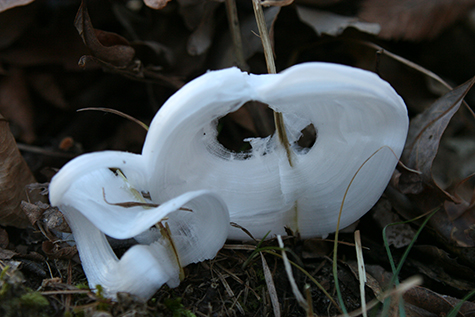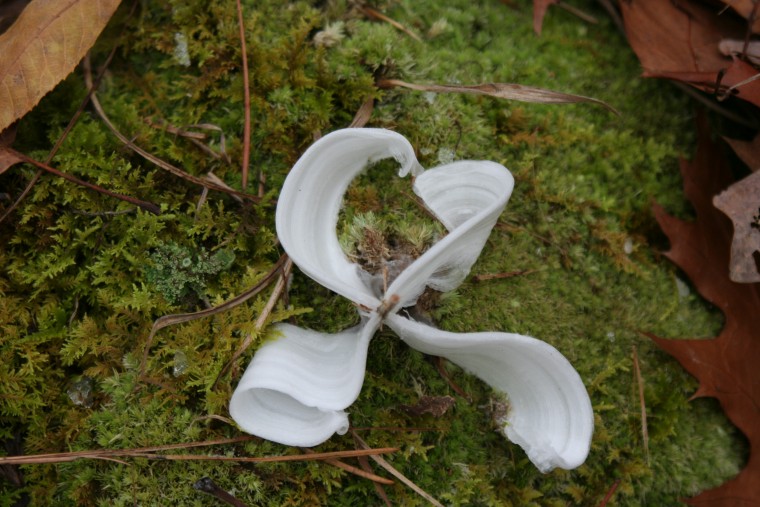Alan Templeton, PhD, of Washington University in St. Louis, has an unusual screen saver on his office computer. If you ask him about it, he’ll tell you it is a frost flower, or ice flower. The “flowers” are fleeting natural creations that appear only once or twice in the fall and are seen only by those who rise early and know where to look. Templeton is the Charles Rebstock Professor of Biology Emeritus in Arts & Sciences.
When do you find them?
You can’t plan frost-flower hunting much in advance. It is best after the night of the first hard freeze. You get up early the next day, the earlier the better. Because they’re so thin once the sun hits they just dissolve. I think the latest I’ve ever seen them is 9 a.m.

Where do you find them?
Only some plants form frost flowers. Most are annuals with thin stems, such as Verbesina virginica, commonly known as frostweed.
I’ve looked in areas that have the acidic soils these plants like, such as Hawn State Park or Pickle Springs or Hickory Canyons. That’s where I’ve seen most of the best frost flowers.
But I’ve seen some beautiful ones on the basic soils at Rockwoods Reservation. I ran out to Rockwoods one morning when I thought the conditions would be right and it was just beautiful.
Why do they form?
When the water in the stem begins to freeze, it expands, cracking open the stem along its length. The unfrozen water is forced through these slots under pressure, freezing as it emerges.

An article in the September-October 2013 issue of American Scientist describes what little is known about the process that causes the ribbons to grow, technically called ice segregation.
The form the flower takes depends on where the slits are in the stem and the pressure, so each one is unique.
How many frost flowers have you photographed?
Hundreds, probably. I love them. They’re all very beautiful.
